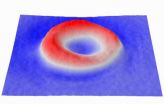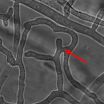(Press-News.org) DALLAS – Sept. 5, 2014 – Researchers at UT Southwestern Medical Center and the Gill Center for Cancer and Blood Disorders at Children's Medical Center, Dallas, have made significant progress in defining new genetic causes of Wilms tumor, a type of kidney cancer found only in children.
Wilms tumor is the most common childhood genitourinary tract cancer and the third most common solid tumor of childhood.
"While most children with Wilms tumor are thankfully cured, those with more aggressive tumors do poorly, and we are increasingly concerned about the long-term adverse side effects of chemotherapy in Wilms tumor patients. We wanted to know – what are the genetic causes of Wilms tumor in children and what are the opportunities for targeted therapies? To answer these questions, you have to identify genes that are mutated in the cancer," said Dr. James Amatruda, Associate Professor of Pediatrics, Molecular Biology and Internal Medicine at UT Southwestern and senior author for the study.
The new findings appear in Nature Communications. Collaborating with Dr. Amatruda on the study were UT Southwestern faculty members Dr. Dinesh Rakheja, Associate Professor of Pathology and Pediatrics; Dr. Kenneth S. Chen, Assistant Instructor in Pediatrics; and Dr. Joshua T. Mendell, Professor of Molecular Biology. Dr. Jonathan Wickiser, Associate Professor in Pediatrics, and Dr. James Malter, Chair of Pathology, are also co-authors.
Previous research has identified one or two mutant genes in Wilms tumors, but only about one-third of Wilms tumors had these mutations.
"We wanted to know what genes were mutated in the other two-thirds. To accomplish this goal, we sequenced the DNA of 44 tumors and identified several new mutated genes," said Dr. Amatruda, who holds the Nearburg Family Professorship in Pediatric Oncology Research and is an Attending Physician in the Pauline Allen Gill Center for Cancer and Blood Disorders at Children's Medical Center. "The new genes had not been identified before. The most common, and in some ways the most biologically interesting, mutations were found in genes called DROSHA and DICER1. We found that these mutations affected the cell's production of microRNAs, which are tiny RNA molecules that play big roles in controlling the growth of cells, and the primary effect was on a family of microRNAs called let-7."
"Let-7 is an important microRNA that slows cell growth and in Wilms tumors in which DROSHA or DICER1 were mutated, let-7 RNA is missing, which causes the cells to grow abnormally fast," Dr. Amatruda said.
These findings have implications for future treatment of Wilms tumor and several other childhood cancers, including neuroblastoma, germ cell tumor, and rhabdomyosarcoma.
"What's exciting about these results is that we can begin to understand what drives the growth of different types of Wilms tumors. This is a critical first step in trying to treat the cancer based on its true molecular defect, rather than just what a tumor looks like under a microscope," Dr. Amatruda said. "Most importantly, we begin to think in concrete terms about a therapy, which is an exciting translational goal of our work in the next few years. This study also is a gratifying example of great teamwork. As oncologists, Dr. Chen and I were able to make rapid progress by teaming up with Dr. Rakheja, an expert pathologist, and with Dr. Mendell, a leading expert on microRNA biology."
According to the American Cancer Society, an estimated 510 cases of Wilms tumor will be diagnosed among children in 2014. Also called nephroblastoma, Wilms tumor is an embryonal tumor of the kidney that usually occurs in children under age 5, and 92 percent of kidney tumors in this age group are Wilms tumor. Survival rates for Wilms tumor have increased from 75 percent in 1975-1979 to 90 percent in 2003-2009.
INFORMATION:
About UT Southwestern Medical Center
UT Southwestern, one of the premier academic medical centers in the nation, integrates pioneering biomedical research with exceptional clinical care and education. The institution's faculty includes many distinguished members, including six who have been awarded Nobel Prizes since 1985. Numbering more than 2,700, the faculty is responsible for groundbreaking medical advances and is committed to translating science-driven research quickly to new clinical treatments. UT Southwestern physicians provide medical care in 40 specialties to nearly 91,000 hospitalized patients and oversee more than 2 million outpatient visits a year.
This news release is available on our home page at
http://www.utsouthwestern.edu/home/news/index.html
To automatically receive news releases from UT Southwestern via email,
subscribe at http://www.utsouthwestern.edu/receivenews
UT Southwestern researchers find new gene mutations for Wilms Tumor
2014-09-05
ELSE PRESS RELEASES FROM THIS DATE:
Study reveals breast surgery as a definitive and safe treatment for elderly patients
2014-09-05
Singapore, 5 September 2014 – A study conducted by National Cancer Centre Singapore (NCCS) has shown that age per se is not a contraindication to breast cancer surgery, and such surgeries may be safely performed for women aged 80 years and above. Led by Dr Ong Kong Wee, Senior Consultant in the Division of Surgical Oncology, the team consists of Dr Veronique Tan, Consultant, and Dr Lee Chee Meng, Resident Doctor. The study explores the safety of breast cancer surgery in women aged 80 years and above.
A retrospective analysis was performed on 109 elderly women who underwent ...
Banked blood grows stiffer with age, study finds
2014-09-05
CHAMPAIGN, Ill. — It may look like fresh blood and flow like fresh blood, but the longer blood is stored, the less it can carry oxygen into the tiny microcapillaries of the body, says a new study from University of Illinois researchers.
Using advanced optical techniques, the researchers measured the stiffness of the membrane surrounding red blood cells over time. They found that, even though the cells retain their shape and hemoglobin content, the membranes get stiffer, which steadily decreases the cells' functionality.
Led by electrical and computer engineering professor ...
Brain mechanism underlying the recognition of hand gestures develops even when blind
2014-09-05
Does a distinctive mechanism work in the brain of congenitally blind individuals when understanding and learning others' gestures? Or does the same mechanism as with sighted individuals work? Japanese researchers figured out that activated brain regions of congenitally blind individuals and activated brain regions of sighted individuals share common regions when recognizing human hand gestures. They indicated that a region of the neural network that recognizes others' hand gestures is formed in the same way even without visual information. The findings are discussed in ...
Synthetic messenger boosts immune system
2014-09-05
This news release is available in German. When a pathogen attacks a healthy cell in the body, T lymphocytes are tasked with identifying and destroying the infected cell. Scientists know that they undergo a "training program" for this task in the lymph nodes or the spleen. "Programming cells" play a key role here, presenting pathogen constituents to the T lymphocytes. This is how the T lymphocytes learn to recognize these components and become specialized "killer" cells. Research teams led by Prof. Percy Knolle from Klinikum rechts der Isar and the University of Bonn ...
Combination microRNA therapy shown to suppress non-small-cell lung cancer
2014-09-05
BOSTON – Micro RNAs (miRNA) have recently emerged as key therapeutic agents against cancers and are actively being evaluated in pre-clinical models of various cancers as well as in human clinical trials.
Now, new findings show that a combination therapy of two miRNAs, let-7 and miR-34, suppressed tumor growth in an animal model of non-small-cell lung cancer, offering a promising therapeutic avenue for this extremely aggressive malignancy.
Currently reported online in the journal Oncogene, the study provides two important examples of basic science discoveries making ...
Stigma as a barrier to mental health care
2014-09-05
Over 60 million Americans are thought to experience mental illness in a given year, and the impacts of mental illness are undoubtedly felt by millions more in the form of family members, friends, and coworkers. Despite the availability of effective evidence-based treatment, about 40% of individuals with serious mental illness do not receive care and many who begin an intervention fail to complete it. A new report, published in Psychological Science in the Public Interest, a journal of the Association for Psychological Science, investigates stigma as a significant barrier ...
An 'anchor' that keeps proteins together
2014-09-05
All organisms react to different external and internal stimuli: if, for example, the hyphae fungus Sordaria macrospora is supplied with food, it produces fruiting bodies as part of its oestrous cycle. To initiate this reaction, signals have to be transmitted within the cell, which are conveyed by proteins. Physical proximity is a fundamental requirement for different proteins to be able to communicate with each other. Generating that proximity is what scaffolding proteins do, by binding like an anchor to several proteins and keeping them together for the duration of signal ...
Use of dengue vaccine may cause short-term spikes in its prevalence
2014-09-05
CORVALLIS, Ore. – As researchers continue to work toward vaccines for serious tropical diseases such as dengue fever, experts caution in a new report that such vaccines will probably cause temporary but significant spikes in the disease in the years after they are first used.
This counter-intuitive and unwanted result could lead to frustrated policy makers, a skeptical public and concerns that the vaccine is making things worse instead of better, researchers say.
In fact, it will just be the natural result of complex interactions between less-than-perfect vaccine protection ...
E-cigarettes: Studies presented at the ERS Congress
2014-09-05
Munich, Germany: The latest evidence on the potential benefits and risks of e-cigarettes has been presented this week at the European Respiratory Society's International Congress in Munich.
Electronic cigarettes have received much attention in recent years as their use has increased across Europe. As the devices are relatively new, there is little long-term evidence detailing the potential harm or benefit that these devices can cause.
During the ERS Congress, a number of abstracts will be presented on the topic. The key outcomes are revealed here:
Research into ...
IBD patients: Consider giving infliximab a second try
2014-09-05
Bethesda, MD (Sept. 5, 2014) — Restarting infliximab therapy after a drug holiday is safe and effective for patients with inflammatory bowel disease (IBD), according to a new study1 in Clinical Gastroenterology and Hepatology, the official clinical practice journal of the American Gastroenterological Association.
"Our findings suggest that starting infliximab after a history of prior therapy can be very beneficial to patients," said lead study author Filip Baert, MD, PhD, from the department of gastroenterology, University Hospitals Leuven in Belgium. "Most striking, ...



